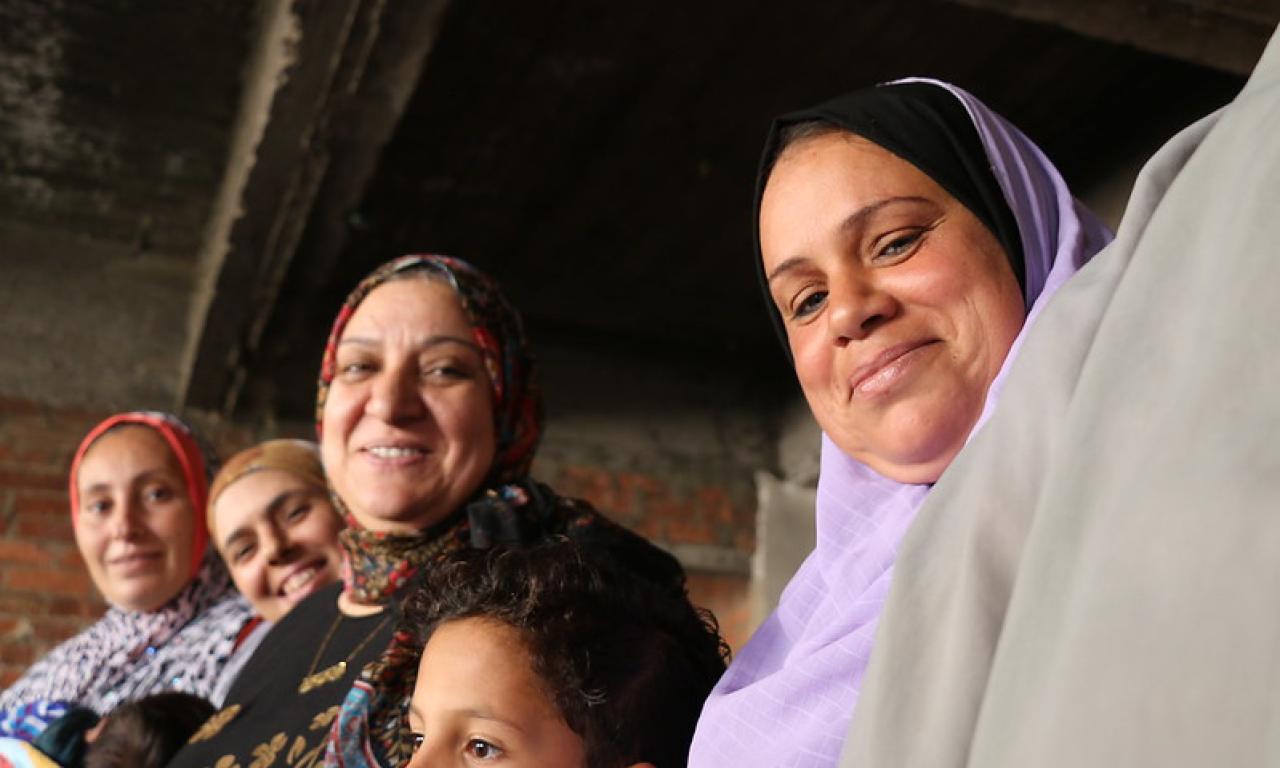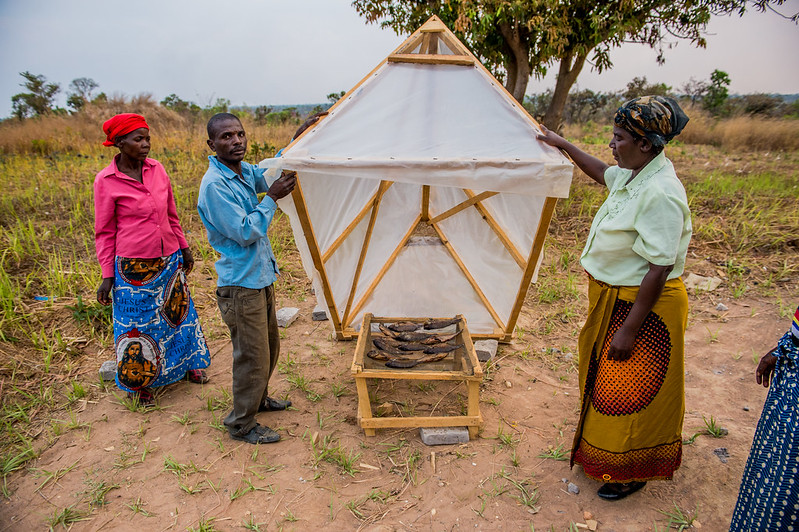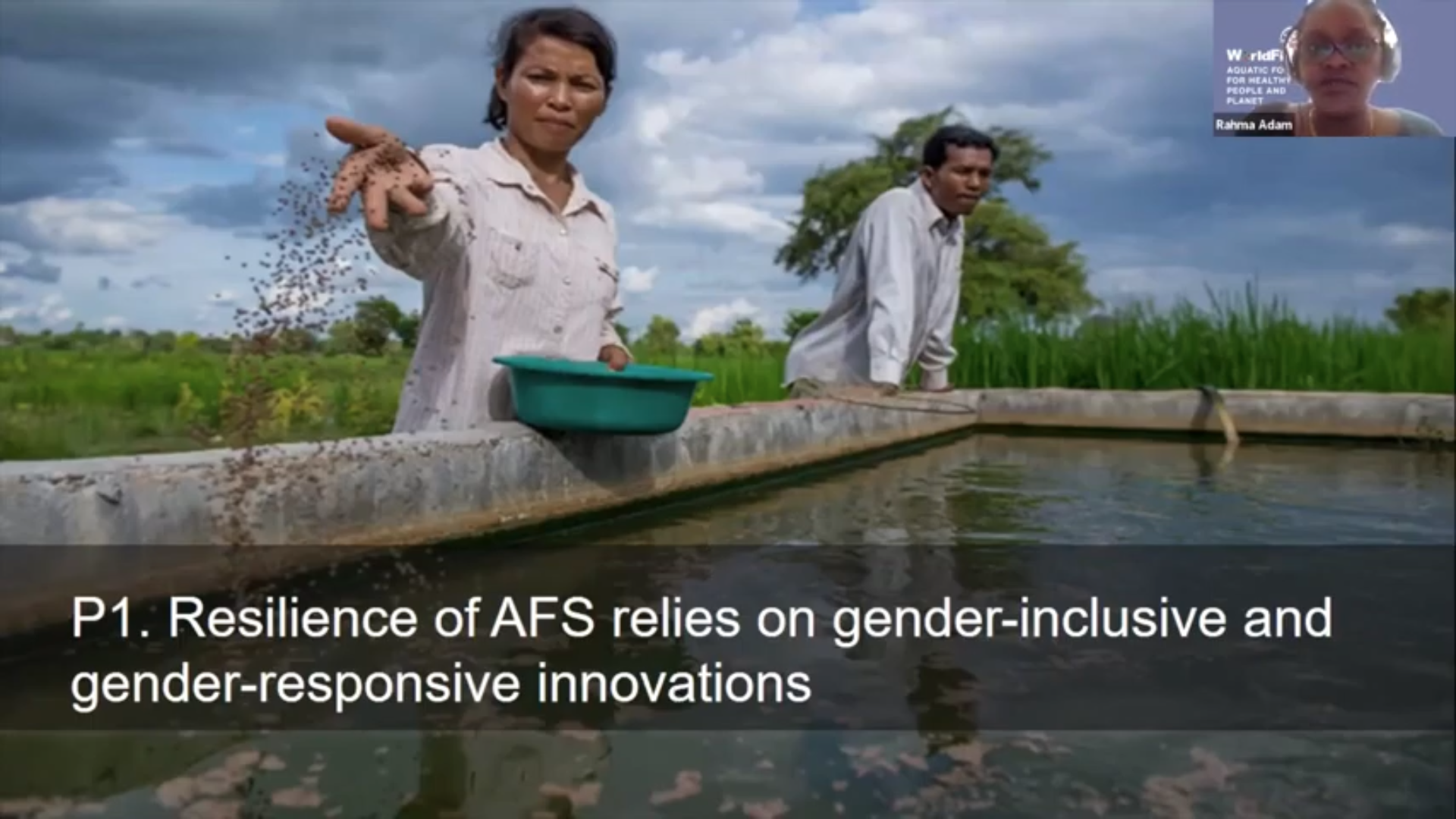
- A Fish4Thought event held in conjunction with International Women’s Day highlighted gender-sensitive innovations to make the aquatic foods sector more equitable and inclusive
- Development interventions must recognize the local dynamics of women’s exclusion to promote their participation in community resource management
Growing evidence points to gender equality playing a key role in aquatic food systems’ contributions to the 2030 Sustainable Development Goals (SDGs), especially SDG 5: Empowering all women and girls. However, despite recent progress in advancing gender equality, gender barriers are still persistent throughout aquatic food supply chains.
In a Fish4Thought virtual event held in conjunction with International Women’s Day, WorldFish's research experts came together to highlight gender-sensitive approaches and innovations that can better empower women in fisheries and aquaculture, ensuring benefits derived from the sector are equally shared amongst men, women and youth.
The presentations focused on WorldFish’s years of work in designing and implementing gender-inclusive innovations in response to the impacts of climate change and COVID-19, which have only exacerbated pre-existing gender inequalities.
The panel of internal experts shared regional innovations in aquatic food systems intended to increase the visibility and agency of women involved in the artisanal fisheries and aquaculture sectors of Asia, Africa and the Pacific, especially in times of shocks.
“Gender-sensitive innovations in aquatic food systems are essential to the implementation of the WorldFish 2030 Research and Innovation Strategy, which focuses on leveraging diverse aquatic foods to equitably nourish people and our planet,” said Shakuntala Thilsted, WorldFish’s global lead for nutrition and public health as well as 2021 World Food Prize Laureate, in her opening remarks.
Leading innovations

Diverse panelists presented a breadth of innovations that are actively making aquatic food systems more inclusive and equitable.
Innovations largely focused on improving women’s access to resources, whether financial capital or new technologies, and improving their say in decision-making at both the household and community level.
In the Solomon Islands, for instance, WorldFish is pioneering a participatory action approach in community meetings to ensure women and youth are actively consulted in fisheries resource management. The approach encourages and monitors how women and youth are sharing, being valued and included in decision-making.
“This approach goes beyond attendance lists at meetings, to actually having women’s voices valued and their active participation sought after in fisheries management plans,” said Anouk Ride, a social scientist at WorldFish.
Women in low- and middle-income countries often lack the agency and inclusion to use their voices when it comes to fisheries resource governance or even how their own household resources are allocated. Part of this is due to gender norms and discrepancies in resources, income and power between men and women; for example, as women’s work is valued less, they tend to generate less income than men.
Women perform the majority of secondary and postharvest fishing activities, like processing and trading, which are less valuable compared to primary activities—leaving them underpaid and underrecognized.
“To alleviate gender barriers, we must first examine where women are situated within the supply chain. Whether in small-scale fisheries or aquaculture, they’re usually found at the nodes of the supply chain that are less lucrative or provide minimal profit as compared to where men are located,” said Rahma Adam, WorldFish’s social inclusion and market scientist, in her remarks.
Adam cited the innovation of climate-smart aquaculture approaches in Bangladesh, where women were engaged as co-researchers, rather than as wives of fish farmers.
“We wanted women not to be passive bystanders but active participants in the research, with them being able to provide ideas about which fish are more resilient or can withstand climatic changes,” said Adam.
Other innovations cited that were empowering women were community-savings groups, where women collectively pool their resources and work together to achieve financial autonomy, gender-inclusive microfinance schemes and climate smart post-harvest technologies and climate-information services that build women’s resilience with improved access to information and resources.
Fostering gender-sensitive interventions

Despite well-meaning intentions, gender-blind innovations and interventions only further perpetuate inequality—only gender-aware innovations can alleviate gender barriers.
To foster a more inclusive approach to development, interventions must thus follow a gender-sensitive approach, which recognizes that women and men have different experiences and challenges to overcome, as opposed to collating them together.
For instance, around 2.5 million women across Africa process and trade fish, and these women are the underrecognized connections between harvested fish and the millions of people they nourish—yet they are largely overlooked in development interventions intended to strengthen food and nutrition security through aquatic foods.
Gender-sensitive approaches would instead examine the role of Africa’s fish processors and traders in sustainable development and provide the specific kind of support they require to maintain their livelihoods.
To ensure women are equitably benefiting from the aquatic foods sector and to promote women’s involvement in management decisions, development interventions must ultimately understand and incorporate gender from the on start, not merely as an afterthought.
“But many projects also incorporate gender in faulty ways, rather than really understanding the local dynamics of exclusion and inclusion, and that is where WorldFish’s work is particularly valuable,” said Ride.
